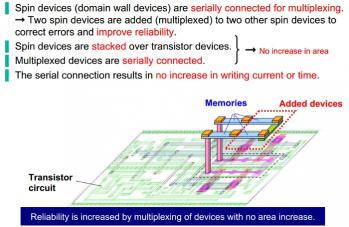Video lecture: recent topics in diluted magnetic semiconductors
Hideo Ohno from Tohoku University's center for spintronics integrated systems gave a special presentation titled "recent topics in diluted magnetic semiconductors". In his talk, Hideo gives an introduction to ferromagnetic (III,Mn)As and then discusses manipulation by electric-field and materials systems other than (III,Mn)As.
This presentation was given at Keio University's Semiconductor-Spintronics workshop which took place on January 24.
